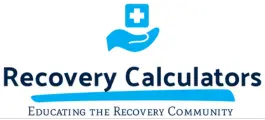Opioid withdrawal is a challenging phase that requires precise management to ensure a patient’s successful recovery. That’s where the COWS (Clinical Opiate Withdrawal Scale) Scale comes in. This tool is integral to our approach, helping us monitor and navigate the stages of withdrawal with greater accuracy and care. As specialists committed to offering the best support and care, we utilize the COWS Scale to assess the severity of withdrawal symptoms and tailor treatments that alleviate discomfort and promote recovery.
The COWS Scale is not just a measure; it’s a roadmap that guides us through the intricacies of opioid withdrawal. It allows us to pinpoint where an individual is in their withdrawal process and adjust our interventions accordingly. This personalized attention is crucial as it acknowledges that each journey to recovery is unique and needs to be treated as such. Today, we are diving deep into understanding how the COWS Scale works, its importance in the management of opioid withdrawal, and how it can be used to customize coping strategies for each individual—ensuring a smoother transition toward recovery.
Key Symptoms Measured by the COWS Scale
The Clinical Opiate Withdrawal Scale (COWS) is an objective tool used by healthcare professionals to assess the severity and progression of withdrawal symptoms in individuals undergoing opiate detoxification. This scale evaluates a range of symptoms that are common during opioid withdrawal, which helps us tailor treatment plans effectively. Key symptoms measured include tremors, sweating, restlessness, pupil size, bone or joint aches, runny nose or tearing, gastrointestinal upset, yawning, anxiety or irritability, and gooseflesh skin.
Each symptom is scored on a scale that quantifies the intensity of the condition, providing us with a cumulative score that reflects the overall severity of withdrawal. This scoring system enables us to monitor the withdrawal process accurately and manage it with the appropriate medical interventions. Understanding these key symptoms and their impact on the body equips us with the necessary information to support our clients through detox with the utmost care and professionalism.
How to Use the COWS Scale to Monitor Withdrawal Progress
Utilizing the COWS Scale to monitor withdrawal offers us a structured method to gauge the effectiveness of the detox protocol and make necessary adjustments. The process involves regularly scoring the ten different symptoms associated with opioid withdrawal during the detox period. We conduct assessments at multiple points throughout the day to ensure that the scores reflect current conditions and respond to any new symptoms or increasing severity promptly.
By documenting these scores, we create a detailed timeline of the withdrawal process, which is vital for our medical team to adjust treatments, manage symptoms proactively, and provide real-time feedback to our clients about their progress. This constant and vigilant monitoring reassures our clients that they are in a controlled and safe environment, reducing the anxiety that often accompanies detox. Accurate use of the COWS Scale not only enhances the safety and efficiency of detox but also increases the probability of a successful, long-term recovery.
How to Use the COWS Scale to Monitor Withdrawal Progress
Implementing the COWS (Clinical Opiate Withdrawal Scale) effectively requires skill and precision. In our practice, we meticulously train our medical staff to utilize this scale to track the progression of opiate withdrawal symptoms accurately. The COWS scale breaks down withdrawal into several key symptoms, each scored to reflect their severity. This quantification enables us to monitor progress meticulously over time.
Moreover, frequent COWS Scale assessments are essential in rapidly and responsively adapting treatment plans. Each evaluation helps us understand whether a patient’s withdrawal symptoms are worsening or improving, allowing us to adjust medical interventions accordingly. This close monitoring is vital in ensuring the safety and comfort of our patients, reducing the risk of severe withdrawal complications, and enhancing the overall effectiveness of the treatment program.
Customizing Coping Strategies Based on COWS Scores
Utilizing the COWS scores, we can tailor coping strategies that match the specific needs of each patient. A higher score on the COWS scale, indicating severe withdrawal symptoms, might prompt us to implement more intensive medical interventions and psychological support. Conversely, lower scores could allow for more engagement in therapeutic activities and less intensive medical oversight, giving patients more autonomy.
Our approach involves a dynamic adjustment of coping strategies as the COWS scores change, which supports a more personalized and responsive treatment experience. We focus on providing emotional support, behavioral therapy, and physical care customized to the intensity of withdrawal symptoms as indicated by ongoing COWS assessments. Through this adaptive methodology, we strive to alleviate distress and enhance the well-being of our patients during the challenging detoxification process.
Conclusion
Remember that at Recovery Calculators, we are dedicated to empowering individuals to overcome addiction with the best tools and support. The Clinical Opiate Withdrawal Scale (COWS) is just one of the many reliable resources we utilize to guide individuals toward a successful recovery. If you or someone you know is struggling with opioid addiction, don’t hesitate to reach out to us. Together, we can pave the way toward a healthier future.


